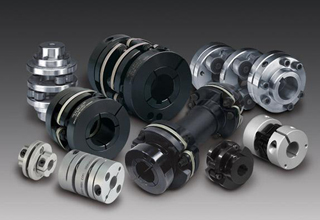I often think of how the Internet has changed our lives, and how it has made it so much simpler in many ways. For example, buying a rare item meant either hoping your local store had it in stock or paging through catalogs. Going on a trip used to mean highlighting a route on a map (though, I think reading a map is a skill everyone should have—what if the GPS can’t find a signal? You’ll never lose that map out of your glovebox).
Nowhere has the Internet simplified searching and purchasing than in the industrial space, where CAD configurators, online catalogs, and other apps have eliminated the need for pulling out a 5-lb catalog and paging through to find the type of product you are looking for, only to find that product may not meet your needs.
With these online tools, it’s as simple as plugging in your requirements, and voila! The company tells you exactly what you should purchase.
Here’s a rundown of some coupling configuration tools from various manufacturers, ranging from simple PDFs to easy-to-use calculators.
Going the traditional route, some companies simply offer downloads of their product catalog pages, including Ruland, Stafford Manufacturing and Baldor’s Maska couplings.
Taking it a bit further are companies like Radicon, R+W, SKF, and Ringfeder, who have simple product selectors, 3D and CAD choices, and interactive tables that allow you to eliminate couplings that don’t fit the bill. While useful, these tools don’t take everything into consideration so do require a bit more searching on your part.
Most common is the online configurator, which is easy to use by simply entering the specs and styles you require such as the sleeve and hub types; power, speed, and torque; torsional, angular, axial, and radial stiffness; displacements; temperatures; driver and driven specs, and other special needs. Tools like this are available from TB Woods, Huco, Timken, OEP Couplings, and Zero-Max. Because these tools consider almost all critical specs required in coupling selection, they give more in-depth, better fitting choices.
Finally, as reported here in the past, smart phone users can download a free app from Lovejoy for their iPhone or Android device, which highlights its most popular coupling types and acts just like the online configurator tools already described. The app automatically eliminates coupling styles that don’t match your specs.
I’m sure there are many more coupling selector tools out there; these are just a few I found on a quick search. Feel free to share others here.
